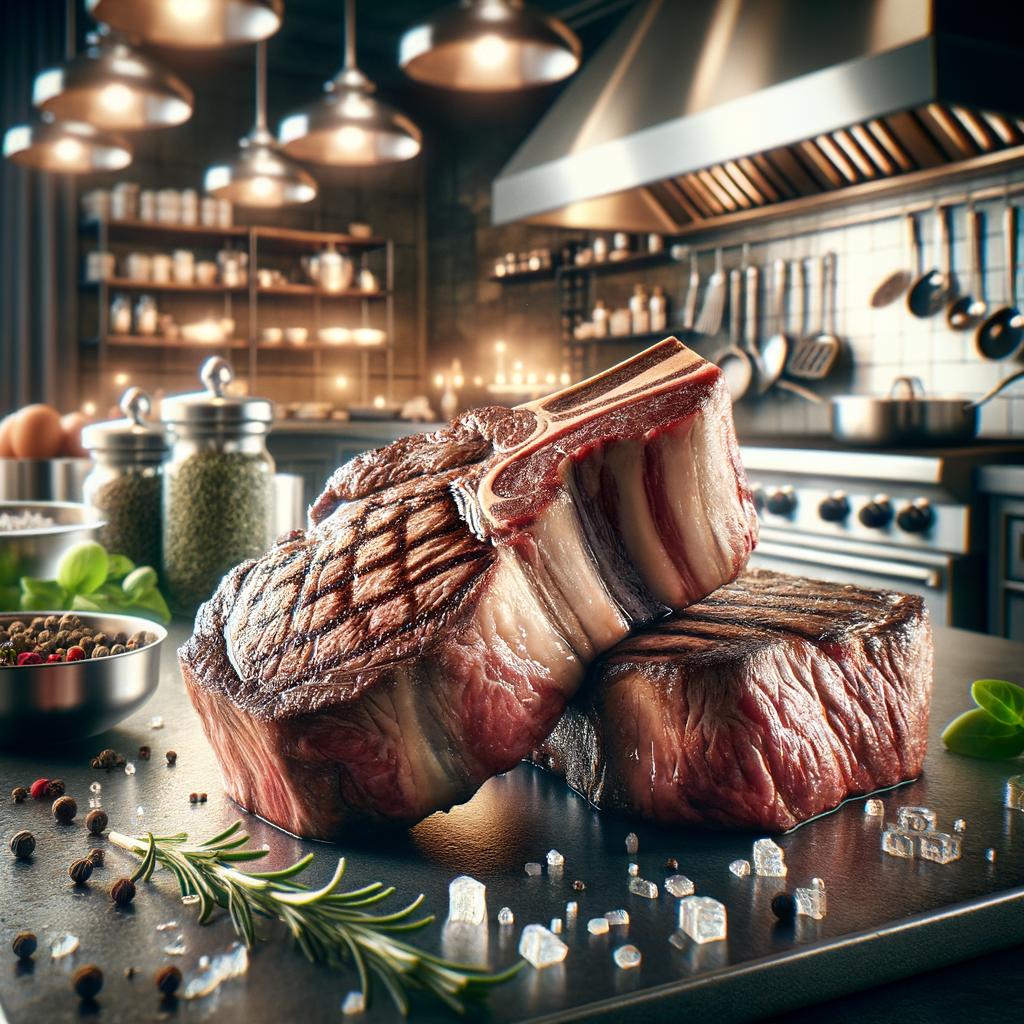Ribeye Steaks

Description Ribeye steak is a true carnivore's delight, an ingredient that brings both flavor and texture to the table. It is a cut of beef from the rib section, with its name derived from the characteristic "eye" of fat in the middle. The steak is marbled with fat, which makes it one of the juiciest and most flavorful cuts of beef. Its appearance is a rich, deep red color, and the texture is tender and succulent. The flavor profile of a ribeye steak is robust and beefy, with the marbled fat adding a buttery richness that sets it apart from other cuts of beef. It's this marbling that sets ribeye apart, as it melts during cooking, enhancing the flavor and tenderness of the steak.
Primary Uses Ribeye steak is a versatile ingredient, used in a variety of culinary applications. It is most commonly grilled or pan-seared to develop a flavorful crust while keeping the inside tender and juicy. It's a star in many cuisines, from the classic American steakhouse where it is often served with potatoes and vegetables, to Korean BBQ where it is marinated and grilled. In French cuisine, it's the key component of the popular "entrecôte" dish. Beyond the culinary world, the ribeye steak is also an important part of many cultural celebrations, often symbolizing abundance and prosperity.
History The ribeye steak has a rich and romantic history. It was a favorite among cowboys in the American West, who would cook it over an open fire under the stars after a long day of cattle driving. As the railroad expanded, so did the popularity of beef, and the ribeye steak began appearing on menus in the East, becoming a symbol of the American Dream. In folklore, it is said that the ribeye steak was the preferred cut of Queen Victoria, who would have it served at her grand banquets. Over time, its popularity has only increased, with ribeye steak now considered a premium cut of beef worldwide.
Nutritional Information Ribeye steak is not only delicious, but also nutritionally dense. It is a good source of protein, providing all essential amino acids. It's also rich in vitamins and minerals, including Vitamin B12, iron, and zinc. The marbled fat in ribeye steak is a source of monounsaturated fats, which are heart-healthy. However, due to its high fat content, it should be consumed in moderation as part of a balanced diet. When compared to leaner cuts of beef, like sirloin, ribeye has a higher fat content, but also a richer flavor profile. As always, the key is balance and moderation.

